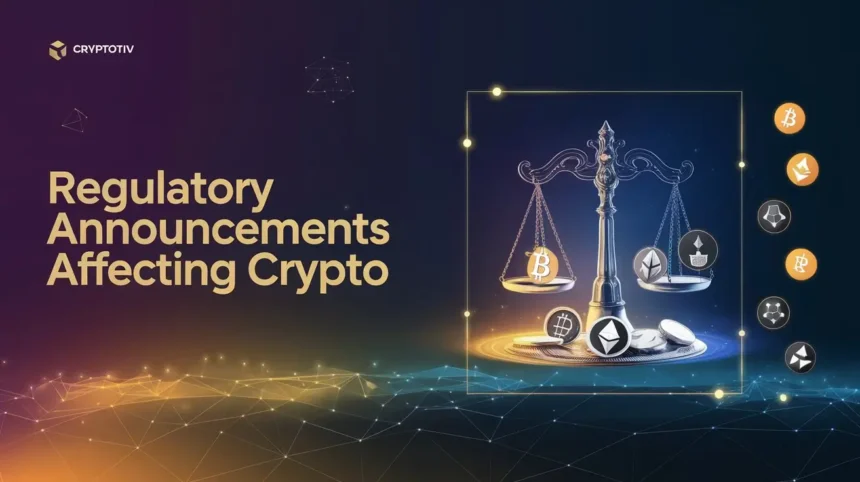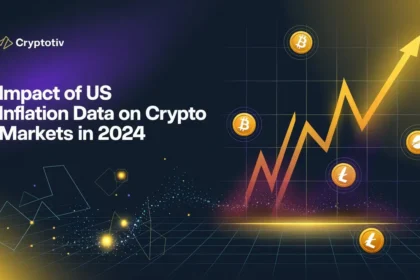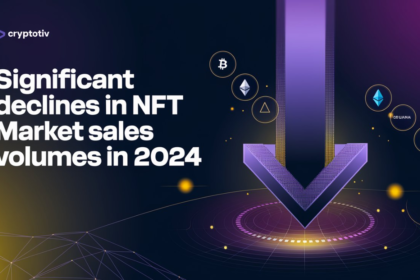Regulatory announcements affecting crypto markets in 2024 have become a central focus for market participants, given their significant impact on prices, trading volumes, and investor sentiment. The year has seen notable developments, particularly in major regions like the United States and the European Union, shaping the crypto landscape. The U.S. Securities and Exchange Commission (SEC) has intensified its stance on crypto asset securities, introducing new rules targeting decentralized finance (DeFi) and exchanges. Meanwhile, the EU’s Markets in Crypto-Assets (MiCA) regulation aims to harmonize crypto regulations across member states, directly influencing market dynamics.
Major Regulatory Changes in the United States
In 2024, the United States’ regulatory landscape has been rapidly evolving, particularly concerning the cryptocurrency market. The SEC’s actions and evolving stance on crypto asset securities have significantly impacted market dynamics and investor sentiment. Additionally, the IRS has introduced new measures to simplify crypto tax reporting, adding clarity for investors and businesses. The Federal Reserve’s monetary policies, particularly interest rate decisions, have also played a crucial role in influencing the crypto market’s volatility and investor behavior.
SEC’s Stance and Its Market Implications
The SEC has been active in its regulation of the cryptocurrency market, emphasizing that most cryptocurrencies fall under securities laws. Recently, the SEC admitted to the misleading use of the term “crypto asset securities” during its legal battle with Binance. This admission created a ripple effect across the market, raising questions about the clarity and consistency of regulatory policies. The ambiguity surrounding this term has led to uncertainty among crypto exchanges and investors, causing a mixed market reaction.
In response to the SEC’s stance, several exchanges have adjusted their compliance practices. Some exchanges have sought to register with the agency, while others have challenged the SEC’s position in court, leading to an environment of regulatory tension. Market sentiment has been affected by the perception of increasing regulatory scrutiny, resulting in short-term market volatility. For instance, the SEC’s expanded lawsuit against Binance, now including assets like Axie Infinity (AXS), Filecoin (FIL), and Cosmos (ATOM), labeled as unregistered securities, has heightened concerns about the future of these and other digital assets.
IRS Simplifying Crypto Tax Reporting
In 2024, the IRS introduced a new draft for digital asset transaction tax forms aimed at simplifying the tax reporting process for crypto investors and traders. This initiative is part of an effort to make tax compliance more accessible and transparent for the growing number of individuals and businesses involved in digital assets.
The IRS’s new approach focuses on consolidating and simplifying the information required for tax reporting, reducing the complexity previously associated with crypto transactions. The draft form includes clearer instructions for reporting different types of digital asset transactions, such as sales, exchanges, and income from staking or mining. This initiative aims to reduce errors and enhance compliance among crypto investors.
Potential Checklist:
- Simplified Tax Form for Crypto Transactions: The new form categorizes various types of digital asset transactions, providing clearer guidelines for each.
- Impact on US Crypto Investors: By simplifying the tax process, the IRS aims to increase compliance and reduce the risk of underreporting or misreporting crypto-related income.
- Compliance Requirements for Crypto Businesses: Businesses must accurately report transactions, ensuring that they adhere to the new guidelines to avoid penalties.
Federal Reserve’s Impact on Crypto Markets
In September 2024, the Federal Reserve’s interest rate decisions continued to be a significant factor influencing cryptocurrency market volatility and investor sentiment. The Fed’s ongoing battle with inflation has led to several rate hikes over the past year, directly impacting risk assets, including cryptocurrencies. Higher interest rates generally lead to a stronger U.S. dollar, making riskier assets like Bitcoin and Ethereum less attractive, which in turn contributes to increased market volatility.
The Federal Reserve’s recent decisions have caused sharp fluctuations in the prices of major cryptocurrencies. For example, Bitcoin and Ethereum experienced increased volatility immediately following the Fed’s rate announcement in September, with investors closely monitoring the central bank’s monetary policy outlook. Interest rate changes also affect the liquidity in the market, as higher rates can lead to a decrease in speculative investment activities, further contributing to market shifts.
European Union’s MiCA Regulation and Its Effects
The European Union’s Markets in Crypto-Assets (MiCA) regulation is a comprehensive framework aimed at harmonizing crypto regulations across EU member states. It establishes a clear set of guidelines for crypto asset issuers and service providers, enhancing market integrity and consumer protection. MiCA addresses the fragmented regulatory landscape by providing a unified framework, particularly focusing on stablecoins and crypto asset issuers’ obligations. This regulation aims to foster innovation while ensuring financial stability within the EU’s digital asset markets.
MiCA’s Influence on Stablecoins
MiCA has introduced specific requirements for stablecoins, including those labeled as “asset-referenced tokens” and “e-money tokens.” One of the key aspects of MiCA’s influence on stablecoins is the requirement for issuers to maintain adequate reserves. These reserves must be highly liquid and secure to ensure that stablecoins can be redeemed at par value. The regulation also mandates transparency in reserve management and regular audits to ensure compliance.
Under MiCA, issuers of stablecoins must adhere to strict governance standards, including transparency in the issuance process and detailed whitepapers that provide information about the token’s features, associated risks, and usage rights. These measures aim to prevent market abuse and ensure that stablecoin issuers maintain the necessary financial resources to meet their obligations, thus fostering trust and stability in the market.
| Requirement | Description |
|---|---|
| Adequate Reserves | Stablecoins must maintain highly liquid reserves to ensure redemption at par value. |
| Transparency | Issuers are required to disclose detailed information about reserve management and undergo regular audits. |
| Issuer Obligations | Strict governance standards, including clear issuance processes and whitepapers outlining token details. |
These requirements have had a significant impact on the stablecoin market in the EU, enhancing liquidity and investor confidence. Stablecoin issuers now face higher compliance costs, but the increased regulatory clarity has attracted more institutional investors, contributing to the growth of the stablecoin market within the European Union.
Impact on Crypto Exchanges and Investors
MiCA’s implementation has brought substantial changes to the operations of crypto exchanges within the EU. Under this regulation, crypto asset service providers (CASPs) are required to register with the relevant national authorities and comply with stringent requirements related to consumer protection, market integrity, and cybersecurity. This includes ensuring that customer funds are safeguarded and providing detailed disclosures about the risks associated with crypto asset trading.
For investors, MiCA’s introduction has had a dual impact. On one hand, it has bolstered investor confidence by ensuring a more secure and transparent trading environment. The enhanced regulatory oversight has reduced the risk of fraud and market manipulation, making the EU crypto market more attractive to both retail and institutional investors. On the other hand, the regulation has increased compliance costs for exchanges, potentially leading to higher trading fees for users.
Note
MiCA’s clear framework has encouraged the growth of the EU’s crypto market by providing legal certainty. Exchanges and other CASPs now have a more defined legal path for offering services across different EU member states, contributing to a more integrated European crypto market. This has resulted in increased trading volumes and market participation, as investors now have greater assurance of the regulatory environment in which they are operating.
Global Regulatory Developments Shaping the Crypto Landscape
Global regulatory changes are shaping the future of cryptocurrency markets, with key regions like Asia and Africa taking significant steps to define their stance on digital assets. In Asia, China is strengthening its anti-money laundering (AML) measures related to crypto, impacting global crypto market activities. Meanwhile, in Africa, Nigeria is moving towards a more progressive crypto framework, aiming to position itself as a leader in crypto adoption. These regulatory moves reflect the growing importance of establishing clear legal frameworks to govern the rapidly evolving crypto market.
China’s AML Strengthening and Crypto Regulation
China has been actively working to incorporate cryptocurrencies into its anti-money laundering (AML) framework to curb illicit activities. In 2024, Chinese authorities introduced new measures requiring enhanced scrutiny of crypto transactions to prevent money laundering and financial crimes. These regulations include stricter reporting requirements for financial institutions and crypto-related businesses to monitor large transactions, especially those involving cross-border payments.
The implications of these regulations are multifaceted. On the one hand, they aim to limit the use of cryptocurrencies in illegal activities, enhancing the global perception of crypto as a more regulated and secure market. However, the stringent nature of China’s AML regulations has also led to a significant crackdown on crypto activities within the country. Many exchanges and mining operations have been forced to shut down or relocate to more crypto-friendly jurisdictions. This crackdown has resulted in decreased global trading volumes and market liquidity, affecting prices and trading behavior across international markets.
China’s regulatory approach continues to impact the global crypto market by influencing how other countries develop their own crypto regulations. China’s focus on stringent AML compliance has prompted other nations to enhance their regulatory frameworks to mitigate the risks associated with digital assets. However, China’s hardline stance also highlights the ongoing tension between fostering innovation and maintaining strict regulatory oversight in the crypto space.
Nigeria’s Progressive Crypto Framework
Nigeria is at the forefront of developing a progressive digital asset legal framework, aiming to harness the benefits of crypto adoption while ensuring regulatory clarity. Recognizing the growing popularity of cryptocurrencies in the country, the Nigerian government has taken steps to create a comprehensive legal structure that supports crypto usage and innovation. In 2024, Nigerian authorities announced the development of a regulatory framework for digital assets, with the Central Bank of Nigeria (CBN) and the Securities and Exchange Commission (SEC) collaborating to define guidelines for crypto activities.
This progressive approach positions Nigeria as a leading market for crypto adoption in Africa. The proposed legal framework focuses on creating a balanced environment where crypto businesses can thrive while safeguarding consumers and the financial system. Key aspects of this framework include setting standards for crypto exchanges, establishing guidelines for initial coin offerings (ICOs), and implementing measures to prevent money laundering and fraud.
Nigeria’s regulatory efforts aim to encourage financial inclusion and economic growth by leveraging blockchain technology and digital assets. By adopting a supportive yet regulated approach, Nigeria seeks to attract investment and innovation in the crypto space, making it a hub for crypto-related activities in Africa. This move is expected to influence other emerging markets to adopt similar frameworks, promoting a more harmonized approach to crypto regulation across the continent.
Immediate Market Reactions to Regulatory Announcements
In 2024, the cryptocurrency markets have exhibited pronounced sensitivity to regulatory announcements, with notable fluctuations in prices and trading volumes. Major events like the U.S. Securities and Exchange Commission’s (SEC) actions and the implementation of the European Union’s MiCA regulation have triggered swift market responses. These regulatory shifts have led to heightened volatility, influencing both investor sentiment and market dynamics. In this section, we analyze the market’s reaction to these key regulatory developments, focusing on changes in the prices of major cryptocurrencies and shifts in trading behaviors.
Market Volatility Post-SEC Announcements
The SEC’s regulatory actions have been a significant driver of market volatility in 2024. For instance, when the SEC expanded its lawsuit against Binance to include various tokens such as Axie Infinity (AXS) and Filecoin (FIL), labeling them as unregistered securities, the market reacted sharply. This announcement led to a temporary drop in the prices of these assets and contributed to overall market uncertainty. Traders and investors responded with caution, leading to increased trading volumes as market participants adjusted their portfolios to mitigate potential risks.
Additionally, the SEC’s admission of the misleading use of the term “crypto asset securities” during its enforcement actions has added to market unpredictability. This ambiguity has caused sudden changes in market sentiment, resulting in heightened volatility. For example, Bitcoin and Ethereum experienced price swings following these regulatory announcements, with some traders adopting a risk-off approach due to the perceived regulatory crackdown on the crypto industry. The resulting fluctuations underscored the sensitivity of the market to regulatory narratives, emphasizing the role of regulatory clarity in maintaining market stability.
European Market Response to MiCA Implementation
The European Union’s Markets in Crypto-Assets (MiCA) regulation has had a noticeable impact on the European crypto market in 2024. MiCA’s introduction brought a sense of regulatory clarity, which initially led to increased trading volumes and a positive shift in market sentiment among European investors. The regulation’s focus on creating a standardized framework for crypto asset service providers and stablecoin issuers has been welcomed by the market, as it addresses long-standing concerns about regulatory fragmentation across the EU.
However, MiCA also imposed new compliance requirements on crypto exchanges operating within the EU, including stricter consumer protection measures and enhanced transparency obligations. In response, some exchanges saw a temporary decrease in trading volumes as they adapted to the new regulatory environment. Despite this initial dip, the overall market sentiment has been cautiously optimistic. Investors have responded positively to the increased regulatory certainty, viewing MiCA’s implementation as a step towards legitimizing and mainstreaming crypto investments in the European market. This shift has contributed to the stabilization of trading behaviors, with increased participation from institutional investors seeking exposure to the European crypto market under a clearer regulatory framework.
Impact of Interest Rate Decisions on Crypto Prices
In September 2024, the Federal Reserve’s interest rate decisions played a crucial role in influencing cryptocurrency prices, particularly Bitcoin and Ethereum. The Fed’s continued efforts to control inflation through monetary policy have led to a series of interest rate hikes, directly affecting the crypto market. Typically, higher interest rates lead to a stronger U.S. dollar, making risk assets like cryptocurrencies less attractive to investors.
Potential Checklist:
- Bitcoin Price Changes Post-Fed Decision: Following the Fed’s latest interest rate hike, Bitcoin experienced a sell-off, with its price dropping temporarily as investors sought safety in more stable assets.
- Ethereum Market Reaction: Ethereum’s price mirrored Bitcoin’s movement, with increased volatility around the Fed’s announcement. Short-term traders capitalized on the price swings, while long-term holders remained cautious.
- Influence on Altcoin Markets: Altcoins also felt the impact of the Fed’s decision, with most experiencing a decline in prices. However, some altcoins with unique use cases showed resilience, indicating a diversification of investor strategies in response to macroeconomic factors.
The Federal Reserve’s actions have underscored the interconnectedness between macroeconomic policy and the crypto market. As the Fed signals its intentions regarding future rate changes, market participants are likely to remain vigilant, monitoring these indicators closely to navigate the crypto market’s response to shifting economic conditions.
Regulatory Outlook and Future Market Trends
As the cryptocurrency market matures, evolving regulations across different regions are poised to play a crucial role in shaping its future. With the U.S. and the European Union (EU) leading the way in implementing comprehensive crypto regulations, other countries are expected to follow suit, contributing to a more regulated and stable market environment. This forward-looking analysis explores how these evolving regulations might influence market dynamics, investor sentiment, and global adoption of cryptocurrencies in the coming months.
Anticipated Regulatory Changes and Market Implications
Several anticipated regulatory changes could significantly impact the crypto market in 2024 and beyond. In the United States, the Securities and Exchange Commission (SEC) is expected to finalize new rules that could impose stricter oversight on cryptocurrency exchanges, especially regarding the classification and trading of digital assets. The SEC may further enforce its stance on crypto asset securities, potentially requiring more exchanges to register and comply with traditional securities laws.
In the EU, the full implementation of the Markets in Crypto-Assets (MiCA) regulation is set to continue in 2024. This regulatory framework will create a unified legal structure for crypto assets and service providers, enhancing transparency and investor protection. MiCA is expected to introduce licensing requirements for crypto asset service providers (CASPs), stringent regulations for stablecoin issuers, and guidelines to mitigate market abuse and systemic risks. The regulation will likely facilitate the integration of crypto services across the EU, encouraging more institutional participation while ensuring a higher level of consumer protection.
Outside the U.S. and EU, other regions like Asia and Africa are also working on their regulatory frameworks. For instance, India is anticipated to introduce its own comprehensive crypto regulations that address tax policy, anti-money laundering (AML) measures, and consumer protection. In Africa, countries like South Africa and Nigeria are leading efforts to establish progressive regulatory standards to govern digital assets, aiming to strike a balance between innovation and risk mitigation.
These anticipated regulatory changes are likely to have several market implications. Firstly, enhanced regulation could lead to increased market stability, attracting more institutional investors who have been wary of the legal uncertainties surrounding crypto investments. However, tighter regulations may also limit market operations, potentially impacting liquidity and innovation. Overall, these changes will significantly shape the market’s evolution, influencing investor strategies and the broader adoption of digital assets.
Investor Sentiment Amid Regulatory Uncertainty
Regulatory uncertainty continues to play a key role in shaping investor sentiment in the crypto market. Institutional and retail investors alike are closely monitoring the evolving regulatory landscape to adapt their strategies accordingly. The increasing regulatory scrutiny, particularly in the U.S. and Europe, has led to a cautious approach among institutional investors, who often favor compliance with established financial regulations.
Amid this uncertainty, many investors are adopting a “wait and see” strategy, choosing to hold their positions or diversify their portfolios to mitigate risks associated with regulatory changes. For instance, some institutional investors are exploring markets with more favorable regulations or diversifying their investments into assets less likely to face stringent regulatory hurdles, such as commodities or real estate. Retail investors, on the other hand, are displaying mixed sentiment. While some remain bullish on the long-term prospects of cryptocurrencies, others have expressed concern over the potential for regulatory crackdowns, which can lead to sudden market downturns.
Despite the uncertainty, there is a growing consensus that regulatory clarity, once achieved, could be a net positive for the market. Clear regulations could reduce market manipulation, increase investor protection, and pave the way for more mainstream adoption of digital assets. Moreover, as countries work towards creating more defined legal frameworks, investor confidence is expected to strengthen, potentially leading to a more resilient and mature market.
Related Article for you:
- US IRS Simplifies Crypto Tax Reporting
- EU’s MiCA Regulation Overview
- China’s Crypto Anti-Money Laundering Laws
- Nigeria’s Proposed Crypto Legal Framework
- Impact of US Treasury Actions on Crypto Markets
As the regulatory landscape for cryptocurrencies continues to evolve globally, its impact on market dynamics, investor sentiment, and the future trajectory of digital assets is becoming increasingly apparent. The year 2024 marks a turning point, with significant regulatory developments taking place in major markets like the U.S. and the EU, as well as emerging markets in Asia and Africa. While regulatory uncertainty has led to increased market volatility, the movement towards clearer regulatory frameworks is expected to bring more stability and maturity to the crypto market.
Despite the immediate fluctuations in prices and trading volumes resulting from these regulatory changes, the long-term outlook suggests that clear regulations could foster greater investor confidence and facilitate the mainstream adoption of digital assets. As the global regulatory environment continues to take shape, both institutional and retail investors will need to navigate these changes strategically, balancing the risks and opportunities that lie ahead.



















